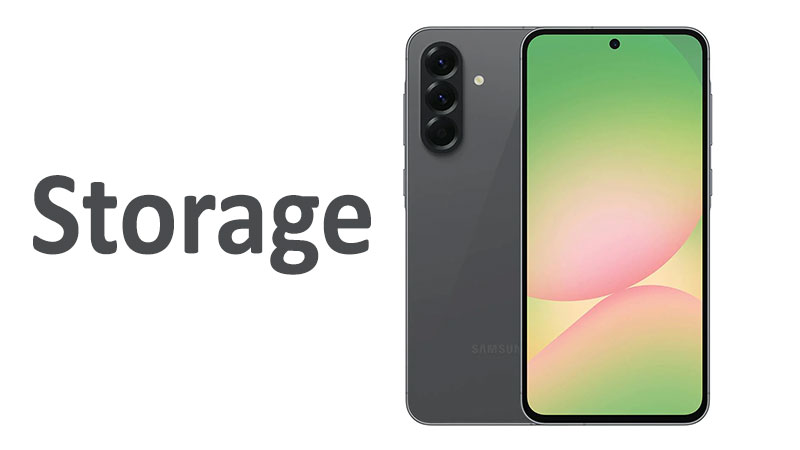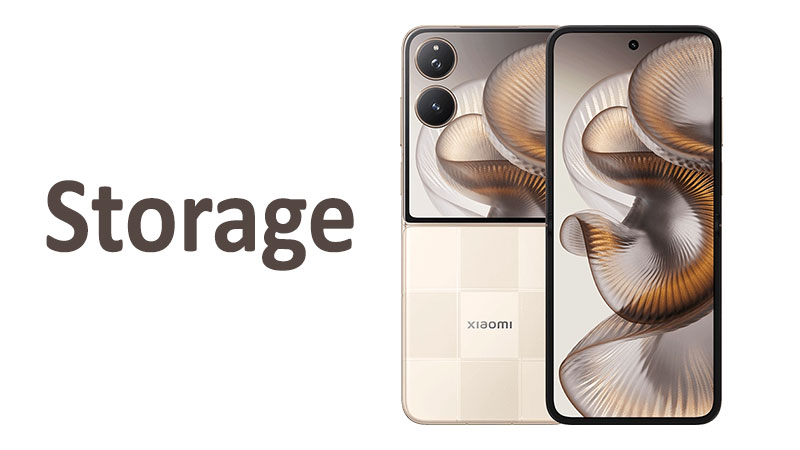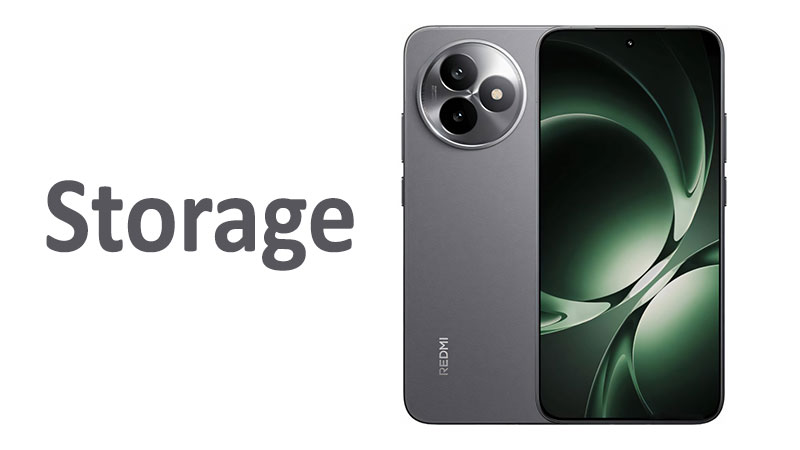The modern smartphone is more than just a communication device; it is a powerful hub for our digital lives. We use it to capture high-resolution photos and videos, run graphically intensive games, and store a vast collection of music, apps, and documents. As a result, a phone’s storage capabilities have become a critical factor in the purchasing decision. The amount of storage, its speed, and the ability to expand it directly impact a user’s experience and the device’s long-term value. This is particularly true for mid-range contenders like the new Samsung Galaxy A56, a device that aims to deliver premium features at a more accessible price point. Understanding the Samsung Galaxy A56 storage options is essential for any potential buyer. This comprehensive guide will delve into every aspect of its storage, from the available capacities to the cutting-edge technology powering it, and the one crucial feature that has been removed.
Internal Storage: Capacity and User-Friendly Options
The Samsung Galaxy A56 comes with two main internal storage configurations, designed to meet the needs of different users. Consumers can choose between the standard 128GB model and a more generous 256GB option. These capacities dictate the total amount of data you can store directly on the device.
For the average user, 128GB of internal storage is often a good starting point. It provides ample space for a large number of applications, thousands of photos, and a healthy collection of videos and music. This capacity is generally sufficient for day-to-day use, social media, and casual content creation. However, the available space is not the full 128GB. A portion of the storage is always reserved for the operating system (Android 15 with Samsung’s One UI 7) and pre-installed applications. This is a standard practice across all smartphones.
For power users, gamers, and avid photographers, the 256GB Samsung Galaxy A56 storage variant is a far more compelling choice. High-resolution photos and 4K videos, which the A56 is capable of capturing, consume storage at a rapid rate. Modern mobile games are also growing in size, often exceeding 10GB or more per title. The 256GB model provides a significant buffer, allowing users to install more apps and create more content without the constant worry of running out of space.
Choosing the right capacity from the outset is more important than ever with the Samsung Galaxy A56, and we will explore why in the next sections.
Storage Technology: The Power of UFS 3.1
Beyond the sheer capacity, the speed of a phone’s storage is a major factor in its overall performance. This is where the Samsung Galaxy A56 truly shines. The device features UFS 3.1 (Universal Flash Storage) technology. This is a significant upgrade that brings flagship-level speeds to a mid-range phone.
What is UFS 3.1, and why does it matter? In simple terms, UFS is a flash memory standard for smartphones that is designed for high-performance and low power consumption. UFS 3.1 offers substantial improvements in read and write speeds compared to its predecessors. For context, UFS 2.2, a common standard in older mid-range devices like the Galaxy A55, has theoretical maximum sequential read speeds of around 1,000 MB/s. UFS 3.1, on the other hand, can achieve sequential read speeds of over 2,100 MB/s.
This leap in speed has a tangible impact on the user experience. You will notice faster app loading times, quicker data transfers, and a more responsive system overall. Opening large files, editing photos, and launching demanding games will feel snappier. Even background tasks and system updates will complete more efficiently. By incorporating UFS 3.1, Samsung has ensured that the Galaxy A56’s storage is not a bottleneck, providing a seamless and high-performance experience that aligns with its powerful Exynos 1580 chipset and fast RAM.
This is a clear advantage over many competitors in its price segment, which may still be using slower storage standards. The inclusion of UFS 3.1 makes the A56 feel more like a premium device in daily use.
A Major Change: The Absence of Expandable Storage
One of the most talked-about changes to the Samsung Galaxy A56 storage is the removal of the dedicated microSD card slot. For many years, expandable storage has been a staple of the Galaxy A-series, allowing users to inexpensively add hundreds of gigabytes of extra space. The Samsung Galaxy A55, for example, featured a microSDXC slot that supported cards up to 1TB. The Galaxy A56, however, does not.
This decision marks a significant shift in Samsung’s strategy for its mid-range lineup. The move brings the Galaxy A56 in line with the company’s flagship Galaxy S series, which has not featured expandable storage for several generations. The primary reason for this change is likely tied to the adoption of the faster UFS 3.1 storage. Implementing a microSD card slot adds complexity to the phone’s internal design and can introduce a performance bottleneck. Even the fastest microSD cards cannot match the speeds of UFS 3.1 internal storage. By removing the slot, Samsung can streamline the device’s architecture and ensure a more consistent, high-speed user experience.
For consumers, this has a profound impact. It means the storage choice you make at the time of purchase is permanent. There is no option to “top up” your storage later with an affordable memory card. This makes the decision between the 128GB and 256GB models even more crucial. Users who were accustomed to buying a lower-capacity phone and adding a microSD card will now need to carefully evaluate their future storage needs.
The loss of expandable storage is a significant trade-off. While the faster internal storage is a huge benefit for performance, it means less flexibility and potentially higher upfront costs for those who need more space. This is a key point that buyers must consider before making a purchase.
Specialized Comparisons: Galaxy A56 vs. Galaxy A55 Storage
To fully appreciate the storage evolution of the Galaxy A-series, a direct comparison between the Samsung Galaxy A56 and its predecessor, the Galaxy A55, is necessary. The storage features of these two phones represent a clear trade-off between flexibility and performance.
The Samsung Galaxy A55 storage was defined by its versatility. It offered a microSDXC slot, allowing users to expand their storage by up to 1TB. This was a major selling point for those who wanted to store massive media libraries or archive data directly on their device. However, the A55 used the older UFS 2.2 storage standard. While still fast enough for most tasks, it was noticeably slower than UFS 3.1. This meant that while you could have a vast amount of storage, accessing data on it was not as quick as on a device with UFS 3.1.
The Samsung Galaxy A56 storage, in contrast, prioritizes raw speed and performance. By moving to UFS 3.1 and removing the microSD slot, Samsung has made a clear statement: internal performance is more important than external flexibility. This new configuration benefits users who demand snappy app performance and fast file transfers. It also caters to those who primarily rely on cloud storage services like Google Photos or Samsung Cloud, where physical media expansion is not a concern.
Summary of the Comparison:
- Samsung Galaxy A55: Expandable storage via microSDXC slot (up to 1TB). Slower UFS 2.2 internal storage.
- Samsung Galaxy A56: No expandable storage. Faster UFS 3.1 internal storage.
This comparison highlights the core dilemma for buyers: do you prefer the flexibility of expandable storage or the superior speed and performance of modern internal memory?
Pros and Cons of Samsung Galaxy A56 Storage
To make an informed decision, it is helpful to weigh the advantages and disadvantages of the Galaxy A56’s storage setup.
Pros:
- Faster Performance: The UFS 3.1 storage technology provides a significant boost in read and write speeds. This translates to faster app loading, quicker file transfers, and a more responsive user interface.
- Enhanced Longevity: The high-speed storage ensures the phone feels fast and fluid for a longer period. It is more future-proof and can handle the demands of increasingly complex apps and larger files.
- Streamlined Design: The removal of the microSD slot may contribute to a more simplified and durable internal design, as it reduces potential points of failure and complexity.
- Cloud-First Strategy: For users who have fully embraced cloud storage for their photos and videos, the lack of a physical expansion slot is not a drawback. The fast UFS 3.1 storage makes it easy to move data to and from cloud services.
Cons:
- No Expandable Storage: This is the most significant con. The inability to add a microSD card means your storage is finite. This can be a dealbreaker for users with extensive offline media libraries.
- Higher Upfront Cost: If you need more than 128GB, you must purchase the more expensive 256GB model from the start. You cannot buy the base model and later add an inexpensive memory card for more space.
- Less Data Portability: Physical memory cards are a simple way to move data between devices. The absence of a slot removes this convenient option, requiring users to rely on cables or wireless transfers.
- Potential for Running Out of Space: Users who fill their storage with photos, videos, or games will eventually have to manage their data more actively, either by deleting old files or offloading them to a computer or cloud service.
Important Points for Potential Buyers
Given the unique storage configuration of the Galaxy A56, here are some key points that every potential buyer should know.
- Assess Your Storage Needs Carefully: Before you buy, consider how much storage you currently use and how much you anticipate needing in the future. Are you a heavy media consumer? Do you download many large games? If you are a digital packrat, the 256GB model is the safer and more practical choice.
- Embrace Cloud Storage: The removal of the microSD card slot is a push towards a cloud-centric ecosystem. If you haven’t already, consider adopting a cloud storage solution like Google One, Dropbox, or Samsung Cloud. These services offer affordable monthly plans and provide a seamless way to back up and access your data from anywhere.
- Understand the Performance Benefit: The lack of a microSD slot is not a purely negative change. The inclusion of UFS 3.1 storage is a genuine performance upgrade. The phone will feel faster and more responsive as a result. This is a worthwhile trade-off for many users who value speed over sheer capacity.
- Consider Your Media Habits: If you travel frequently and need to have your entire movie or music collection with you offline, a phone with a microSD card slot might still be a better option for you. The A56’s fixed storage may require you to be more selective about the content you keep on the device.
Conclusion
The Samsung Galaxy A56 storage story is one of trade-offs and modernization. By adopting UFS 3.1 technology, Samsung has endowed this mid-range smartphone with a level of speed and responsiveness previously reserved for its flagship models. This is a clear and tangible benefit for daily performance, making everything from launching apps to transferring files feel snappier and more fluid.
However, this performance boost comes at the cost of a long-standing feature: expandable storage. The removal of the microSD card slot forces a permanent storage decision at the time of purchase. While this aligns the Galaxy A56 with the premium smartphone market, it removes a key element of flexibility and affordability that has long been a hallmark of the A-series.
For the modern smartphone user who is comfortable with cloud storage and values speed above all else, the Galaxy A56’s storage configuration is a fantastic step forward. The 256GB variant provides ample space and top-tier performance that will keep the device feeling new for years to come. For those who still rely on physical media cards and need the option to expand their storage on a whim, this change will be a significant drawback. Ultimately, the decision comes down to personal preference and how you manage your digital life. The Samsung Galaxy A56 offers a compelling vision for the future of mid-range smartphones, but it’s a future that is distinctly cloud-focused and performance-driven.
FAQ
No, the Samsung Galaxy A56 does not have a microSD card slot. Its internal storage is not expandable.
The Samsung Galaxy A56 is available with either 128GB or 256GB of internal storage.
Yes, UFS 3.1 internal storage is significantly faster in read and write speeds than even the fastest consumer-grade microSD cards.
A portion of the storage is used by the operating system and pre-installed apps. Typically, you can expect around 105-115GB of usable space on the 128GB model.
The Galaxy A56 has a much faster UFS 3.1 internal storage type but lacks the microSD card slot that was present on the Galaxy A55.



